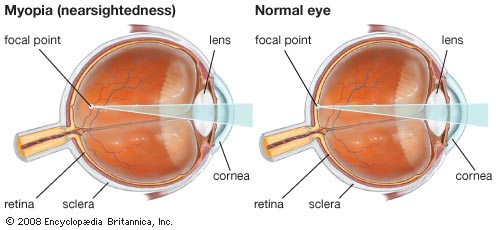Myopia or nearsightedness is one of the most common visual high myopia eye problems. In the recent years, it has become more prevalent than ever. People with myopia are able to see close objects clearly but have difficulty seeing objects that are farther away. Common causes of myopia are having difficulty clearly seeing TV screens or the whiteboard at school. In a recent study by the National Eye Institute (NEI), shows that the prevalence of myopia in the United States has grown from 25% between 1971-72 to a whopping 41.6% in 1999 2004. The exact cause of this condition is still not fully known. Many doctors, however, believe that this condition has something to do with constant eye fatigue due to extended use of the eyes for near vision tasks and a genetic tendency to develop myopia.Understandably, parents who have myopia may be concerned about their children developing this problem as well. Thankfully, myopia treatment is a condition that can be corrected by eyeglasses and contact lenses.
What Causes Myopia? Correct myopia occurs when an eyeball is longer/larger than average. When this happens, the light entering the eyes cannot focus correctly and the distant objects become blurred. Nearsightedness can also be caused when the cornea or the lens is too curved for the length of the eyeball. In many cases, myopia is caused due to the combination of both problems.Many patients initially feel the changes in their eyesight during childhood. Although, in most cases nearsightedness stabilizes when the child reaches early adulthood and continues to progress with age.Also Read: Basics About Blue Light What Causes Myopia In Children? Unfortunately, the exact reason why children become nearsighted is still widely unknown. Many eye experts believe that genetics are a factor. In short, if both parents have experienced nearsightedness in their lifetime, there is a good chance that their children will also become nearsighted. Nonetheless, you cannot predict nearsightedness. To this day, plenty of research and studies are being done to understand and treat myopia for good. What are the Symptoms of Myopia? Nearsightedness comes with a variety of symptoms including:- Blurry vision when looking at distant objects
- Headaches due to eyestrain
- The need to squint or partially close the eyelids to see clearly
- Difficulty in seeing clearly when driving a vehicle, especially at night time
- Squinting persistently
- Seeming to be unaware or unable to see distant objects
- The need to sit closer to the TV or movie screens
- Rubbing the eyes frequently
- Blinking excessively
- Unaware of distant objects
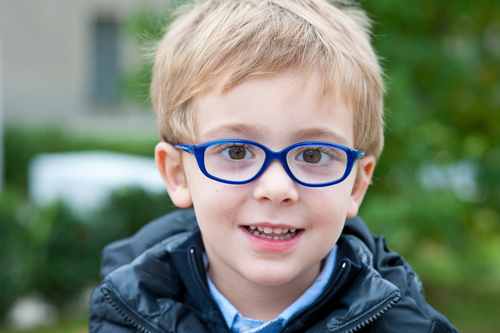 The exact reason why eyes become too long is still not unknown. However, numerous research indicates that there are numerous factors why this is happening. For many people, myopia appears to be a condition inherited from parents. In other words, it is a hereditary condition. Researchers are also looking at the effects of age, gender, ethnicity, and various environmental exposures on the growing number of people experiencing nearsightedness. For example, those who are constantly exposed to sunlight and the amount of time spent doing close up work. There's also a number of scientists who believe that the body's circadian rhythm is a factor for developing this condition.
Myopia Treatment
There is no known outright cure for nearsightedness. However, an eye doctor can offer your child a number of possible myopia treatments to slow the progress of this condition. These treatments can induce changes in the structure of the eye; some can also help the eyes relax to reduce stress and fatigue associated with myopia.Nearsightedness can be corrected with specialized glasses, contact lenses, refractive surgery or specialized eye drops. The kind of treatment that will be administered to your child will wholly depend on the degree of myopia progression that he or she may be experiencing. Your child may need to wear prescription sunglasses or contact lenses all the time or only when they need to see distant objects.Contact Lenses and Eyeglasses Nearsighted patients will wear special eyeglasses to see better. The first number (sphere) on your child's eyeglasses or contact lenses will usually be preceded with a negative sign. The higher this negative number, the more nearsighted your child is. Most children around the world choose these options since contacts/glasses are only worn when needed.Surgery Refractive surgery will also be a good option to reduce or even completely eliminate the need to constantly wear contacts or eyeglasses. Common procedures are performed using excimer laser.During PRK laser treatment, the laser will remove a layer of the corneal tissue, which helps flatten the cornea. This means the light rays will no longer have difficulty to enter and focus accurately on the retina. In the meantime, during a LASIK Laser Treatment, a thin flap is created right on the surface of the cornea. A laser will then remove a corneal tissue and then the flap is returned to the original position.
The exact reason why eyes become too long is still not unknown. However, numerous research indicates that there are numerous factors why this is happening. For many people, myopia appears to be a condition inherited from parents. In other words, it is a hereditary condition. Researchers are also looking at the effects of age, gender, ethnicity, and various environmental exposures on the growing number of people experiencing nearsightedness. For example, those who are constantly exposed to sunlight and the amount of time spent doing close up work. There's also a number of scientists who believe that the body's circadian rhythm is a factor for developing this condition.
Myopia Treatment
There is no known outright cure for nearsightedness. However, an eye doctor can offer your child a number of possible myopia treatments to slow the progress of this condition. These treatments can induce changes in the structure of the eye; some can also help the eyes relax to reduce stress and fatigue associated with myopia.Nearsightedness can be corrected with specialized glasses, contact lenses, refractive surgery or specialized eye drops. The kind of treatment that will be administered to your child will wholly depend on the degree of myopia progression that he or she may be experiencing. Your child may need to wear prescription sunglasses or contact lenses all the time or only when they need to see distant objects.Contact Lenses and Eyeglasses Nearsighted patients will wear special eyeglasses to see better. The first number (sphere) on your child's eyeglasses or contact lenses will usually be preceded with a negative sign. The higher this negative number, the more nearsighted your child is. Most children around the world choose these options since contacts/glasses are only worn when needed.Surgery Refractive surgery will also be a good option to reduce or even completely eliminate the need to constantly wear contacts or eyeglasses. Common procedures are performed using excimer laser.During PRK laser treatment, the laser will remove a layer of the corneal tissue, which helps flatten the cornea. This means the light rays will no longer have difficulty to enter and focus accurately on the retina. In the meantime, during a LASIK Laser Treatment, a thin flap is created right on the surface of the cornea. A laser will then remove a corneal tissue and then the flap is returned to the original position.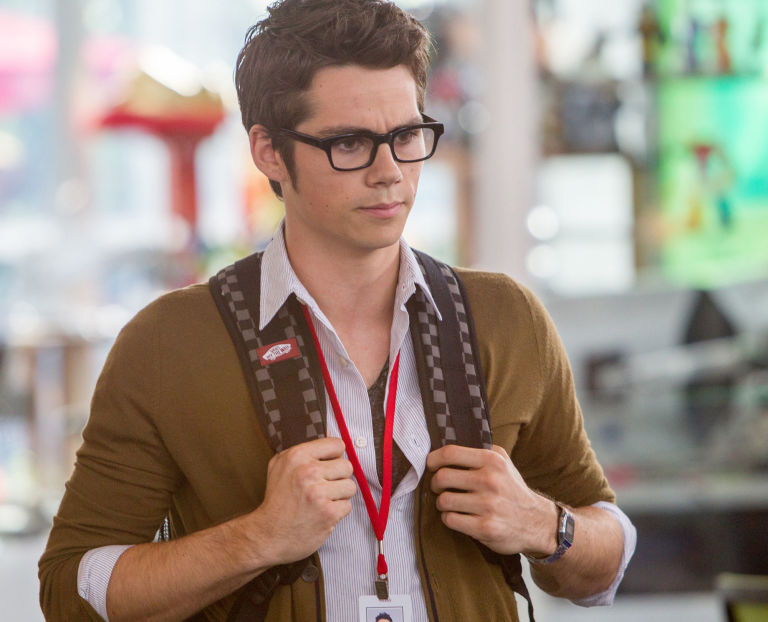 Atropine Drops Using Atropine Eyedrops is another option which has been used to control myopia. This kind of treatment, however, has short term results. In addition, the use of these eye drops may have some drawbacks. Topical atropine is a medicine that dilates the pupil and temporarily paralyzes and relaxes the eye's focusing mechanism.Atropine is not used for routine dilated eye examinations. Because the actions are long lasting it may take up to a week or longer before it wears off. For eye exams, the dilating drops that doctors use will only last up to two hours. These days, atropine is used to reduce eye pain caused by certain type of eye problems. Research shows that myopia in children is linked to focusing fatigue problems, so many researchers are looking into the possibility of disabling the eye's focusing mechanism.So far the results of the studies involving Atropine for myopia have been promising. Showing an average reduction of myopia progression by 81 percent among children with nearsightedness especially during the first year of treatment. To this day, studies continue on the different effects and possibilities of atropine as an effective long-term treatment for myopia.Use of Multifocal Lenses Using multifocal lenses are considered one of the safest ways to combat myopia. These are special eyeglass lenses that have a number of different levels of prescription power that helps correct myopia and presbyopia (farsightedness). Multifocal eyeglasses have been tested numerous times to prove that is an effective way to control myopia. In fact, there are numerous studies around the world which show the positive effects of multifocal eyeglasses to reduce the effect of myopia.
Controlling Myopia
Atropine Drops Using Atropine Eyedrops is another option which has been used to control myopia. This kind of treatment, however, has short term results. In addition, the use of these eye drops may have some drawbacks. Topical atropine is a medicine that dilates the pupil and temporarily paralyzes and relaxes the eye's focusing mechanism.Atropine is not used for routine dilated eye examinations. Because the actions are long lasting it may take up to a week or longer before it wears off. For eye exams, the dilating drops that doctors use will only last up to two hours. These days, atropine is used to reduce eye pain caused by certain type of eye problems. Research shows that myopia in children is linked to focusing fatigue problems, so many researchers are looking into the possibility of disabling the eye's focusing mechanism.So far the results of the studies involving Atropine for myopia have been promising. Showing an average reduction of myopia progression by 81 percent among children with nearsightedness especially during the first year of treatment. To this day, studies continue on the different effects and possibilities of atropine as an effective long-term treatment for myopia.Use of Multifocal Lenses Using multifocal lenses are considered one of the safest ways to combat myopia. These are special eyeglass lenses that have a number of different levels of prescription power that helps correct myopia and presbyopia (farsightedness). Multifocal eyeglasses have been tested numerous times to prove that is an effective way to control myopia. In fact, there are numerous studies around the world which show the positive effects of multifocal eyeglasses to reduce the effect of myopia.
Controlling Myopia
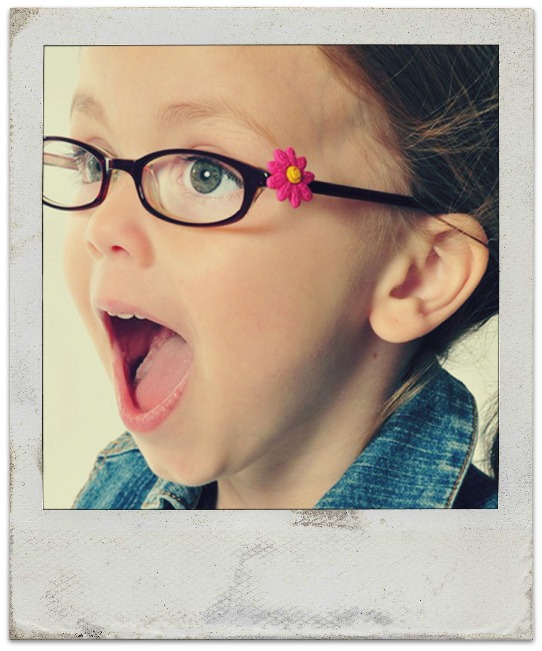 A common theory as to why a larger number of people have myopia involves the persistent use of modern electronics. The belief is that more and more people are playing/working on phones or tablets or are watching TV, which causes eye strain which in turn leads to nearsightedness. Thankfully, there are numerous ongoing studies that look promising when it comes to myopia treatment.Different techniques have been tried, including fitting children with progressive lenses, bifocals, and gas permeable contact lenses, with different or mixed results.
How To Reduce Your Child's Risk of Having Myopia?
There are plenty of unknown causes for myopia. The best thing that you can do as a parent is to encourage a healthy lifestyle for your child. Inspire your child to play outdoors. A number of scientific studies have found that spending more time playing outdoors may help prevent or reduce the chances of developing nearsightedness. Here are some common examples:In August of 2008, a study published in Australia found that the effect of time spent outdoors for patients with the condition among more than a thousand 6-year-old children and more than 2 thousand 12-year-olds show that those who spend more time outdoors had less myopia at the end of two-year study period. Even after adjusting different factors like parental myopia, ethnicity, and reading performance, the study still proved that enjoying nature more than the TV or computer will help reduce myopia.
A common theory as to why a larger number of people have myopia involves the persistent use of modern electronics. The belief is that more and more people are playing/working on phones or tablets or are watching TV, which causes eye strain which in turn leads to nearsightedness. Thankfully, there are numerous ongoing studies that look promising when it comes to myopia treatment.Different techniques have been tried, including fitting children with progressive lenses, bifocals, and gas permeable contact lenses, with different or mixed results.
How To Reduce Your Child's Risk of Having Myopia?
There are plenty of unknown causes for myopia. The best thing that you can do as a parent is to encourage a healthy lifestyle for your child. Inspire your child to play outdoors. A number of scientific studies have found that spending more time playing outdoors may help prevent or reduce the chances of developing nearsightedness. Here are some common examples:In August of 2008, a study published in Australia found that the effect of time spent outdoors for patients with the condition among more than a thousand 6-year-old children and more than 2 thousand 12-year-olds show that those who spend more time outdoors had less myopia at the end of two-year study period. Even after adjusting different factors like parental myopia, ethnicity, and reading performance, the study still proved that enjoying nature more than the TV or computer will help reduce myopia. In another study in May 2013, researchers in Taiwan published the results of the effect of outdoor activity during class recess to students with a high risk of myopia and progression among elementary aged children. Children were encouraged to go outdoors for various activities during recess, whereas some students did not participate and stayed indoors. In the beginning of the study, there were no significant changes, however, after a year, the children who spent time outdoors had a significantly lower onset of myopia than those who stayed indoors.Many more studies around the world have shown similar results. This may explain the reason why this condition has increased in recent years when children's play habits have changed from active games and outdoor sports to indoor television watching and computer games.Early detection is another important way to help protect your child from progressive myopia. Even if your child is not complaining of vision problems, do a yearly checkup with your eye doctor. They will be able to see if your child is developing any ocular condition.Pre-teens may experience a faster progress in myopia, which is why many studies are focused during this age. It is important to encourage your child to always wear corrective eyewear to ensure good eyesight and protection against outside elements.Consider these recommended eyewear from Heavyglare :
In another study in May 2013, researchers in Taiwan published the results of the effect of outdoor activity during class recess to students with a high risk of myopia and progression among elementary aged children. Children were encouraged to go outdoors for various activities during recess, whereas some students did not participate and stayed indoors. In the beginning of the study, there were no significant changes, however, after a year, the children who spent time outdoors had a significantly lower onset of myopia than those who stayed indoors.Many more studies around the world have shown similar results. This may explain the reason why this condition has increased in recent years when children's play habits have changed from active games and outdoor sports to indoor television watching and computer games.Early detection is another important way to help protect your child from progressive myopia. Even if your child is not complaining of vision problems, do a yearly checkup with your eye doctor. They will be able to see if your child is developing any ocular condition.Pre-teens may experience a faster progress in myopia, which is why many studies are focused during this age. It is important to encourage your child to always wear corrective eyewear to ensure good eyesight and protection against outside elements.Consider these recommended eyewear from Heavyglare :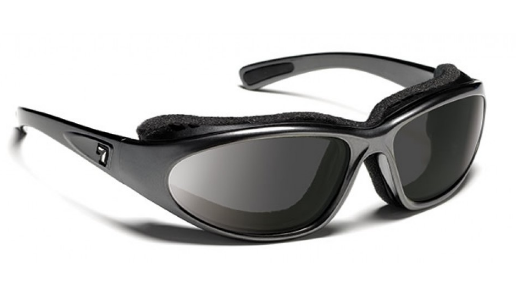 7eye Bora comes with Panoptx orbital foam shield which protects the eyes from any debris especially if your child will be doing plenty of movements while outdoors. This eyewear is multifocal lens friendly, so you can request for a multifocal lenses according to your child's specific need.
7eye Bora comes with Panoptx orbital foam shield which protects the eyes from any debris especially if your child will be doing plenty of movements while outdoors. This eyewear is multifocal lens friendly, so you can request for a multifocal lenses according to your child's specific need.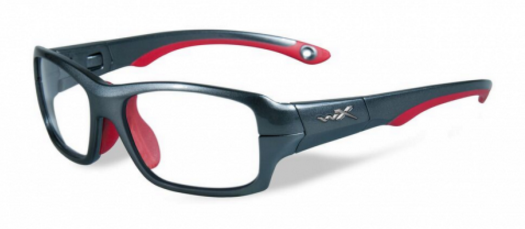 Wiley X Fierce - meets with the ASTM F803 Sports Safety Standard for durability and conveniently changes from glasses into goggles.
Wiley X Fierce - meets with the ASTM F803 Sports Safety Standard for durability and conveniently changes from glasses into goggles.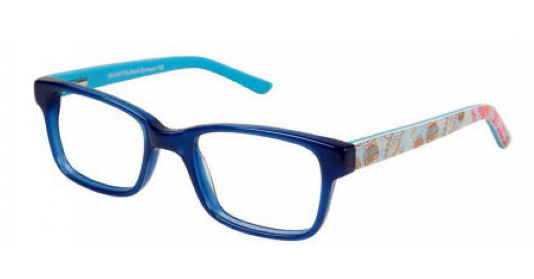 PEZ Peanut : these glasses meet the needs of durability for active boys and girls. Parents will appreciate the PEZ "No Questions Asked" Lifetime Warranty on all PEZ eyewear.
What Is Degenerative Myopia?
PEZ Peanut : these glasses meet the needs of durability for active boys and girls. Parents will appreciate the PEZ "No Questions Asked" Lifetime Warranty on all PEZ eyewear.
What Is Degenerative Myopia?
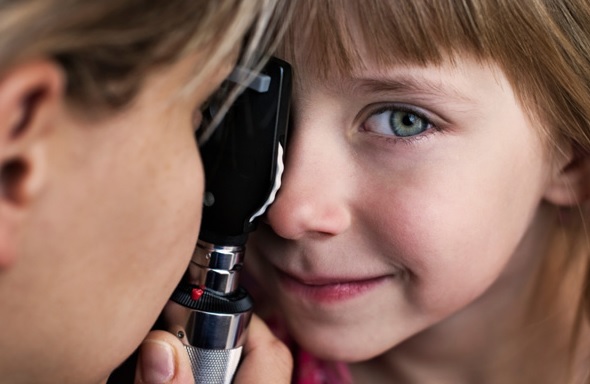 In many cases, nearsightedness poses no health risk or simply a minor inconvenience. However, there are rare cases when myopia can be extremely progressive and so severe that doctors consider it a degenerative condition. Degenerative myopia (also known as malignant or pathological myopia) is a rare condition that is believed to be more of hereditary and usually starts early during childhood. At least about 2 percent of Americans are affected by the condition, and degenerative myopia is a leading cause of becoming legally blind in the United States.In malignant myopia, the elongation of the eyeball can happen suddenly which leads to quick and severe progression of myopia, as well as, loss of vision. Patients that have this condition will have a significant risk of retinal detachment and a myriad of other degenerative changes that may occur in the back of the eye, including bleeding when there is an abnormal growth of blood vessels. Degenerative myopia may also increase the risk of developing cataracts in the eyes.Surgical treatment for this type of condition may be required, your child's physician may also recommend medications and laser treatment combination known as photodynamic therapy. This is the same treatment usually used for macular degeneration patients. There is a recent study, which shows that taking an oral medicine known as 7-methylxanthine is effective in slowing the elongation of the eye for nearsighted children ages 8 13 years old. This type of studies will eventually lead to an effective medical treatment for problems like degenerative myopia.
Possible Complications of Having Myopia
Having myopia is usually not considered a medical emergency. Most children and adults with this condition are able to get on with their lives without any problems at all. However, there are common complications that is associated with nearsightedness.Reduced Quality of Life when your child's nearsightedness goes on without correction, they may experience reduced quality of life. They will be unable to perform typical tasks that they want to do. In addition, their poor eyesight may not be able to let them enjoy day-to-day living. For example, children with uncorrected myopia may not be able to perform sports. It is best to always get a professional opinion if you think your child have nearsightedness.Eyestrain nearsightedness that is uncorrected may cause your child to always squint or strain their eyes to see better. This causes eyestrain and headaches in the process.Impaired Safety When your child has uncorrected myopia, they may be putting their lives at risk. If your child is a teen and will want to learn to drive soon, this may be a huge problem.Make sure your child gets the right treatment as soon as possible. Nearsightedness can easily be managed with the right kind of treatment.
In many cases, nearsightedness poses no health risk or simply a minor inconvenience. However, there are rare cases when myopia can be extremely progressive and so severe that doctors consider it a degenerative condition. Degenerative myopia (also known as malignant or pathological myopia) is a rare condition that is believed to be more of hereditary and usually starts early during childhood. At least about 2 percent of Americans are affected by the condition, and degenerative myopia is a leading cause of becoming legally blind in the United States.In malignant myopia, the elongation of the eyeball can happen suddenly which leads to quick and severe progression of myopia, as well as, loss of vision. Patients that have this condition will have a significant risk of retinal detachment and a myriad of other degenerative changes that may occur in the back of the eye, including bleeding when there is an abnormal growth of blood vessels. Degenerative myopia may also increase the risk of developing cataracts in the eyes.Surgical treatment for this type of condition may be required, your child's physician may also recommend medications and laser treatment combination known as photodynamic therapy. This is the same treatment usually used for macular degeneration patients. There is a recent study, which shows that taking an oral medicine known as 7-methylxanthine is effective in slowing the elongation of the eye for nearsighted children ages 8 13 years old. This type of studies will eventually lead to an effective medical treatment for problems like degenerative myopia.
Possible Complications of Having Myopia
Having myopia is usually not considered a medical emergency. Most children and adults with this condition are able to get on with their lives without any problems at all. However, there are common complications that is associated with nearsightedness.Reduced Quality of Life when your child's nearsightedness goes on without correction, they may experience reduced quality of life. They will be unable to perform typical tasks that they want to do. In addition, their poor eyesight may not be able to let them enjoy day-to-day living. For example, children with uncorrected myopia may not be able to perform sports. It is best to always get a professional opinion if you think your child have nearsightedness.Eyestrain nearsightedness that is uncorrected may cause your child to always squint or strain their eyes to see better. This causes eyestrain and headaches in the process.Impaired Safety When your child has uncorrected myopia, they may be putting their lives at risk. If your child is a teen and will want to learn to drive soon, this may be a huge problem.Make sure your child gets the right treatment as soon as possible. Nearsightedness can easily be managed with the right kind of treatment.

